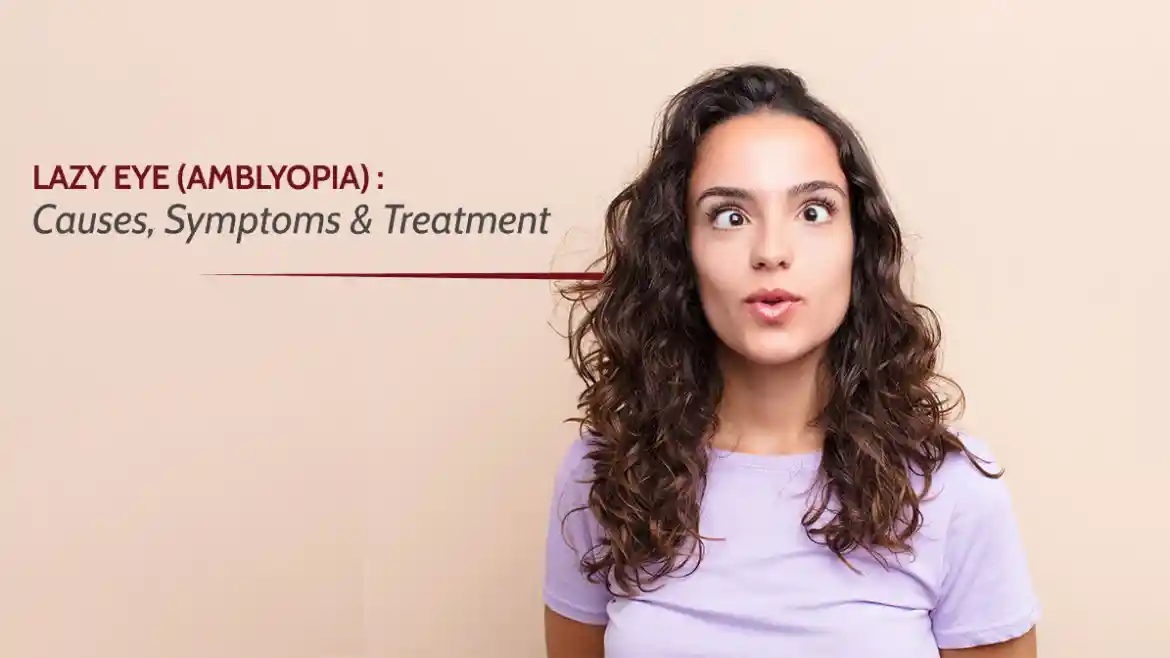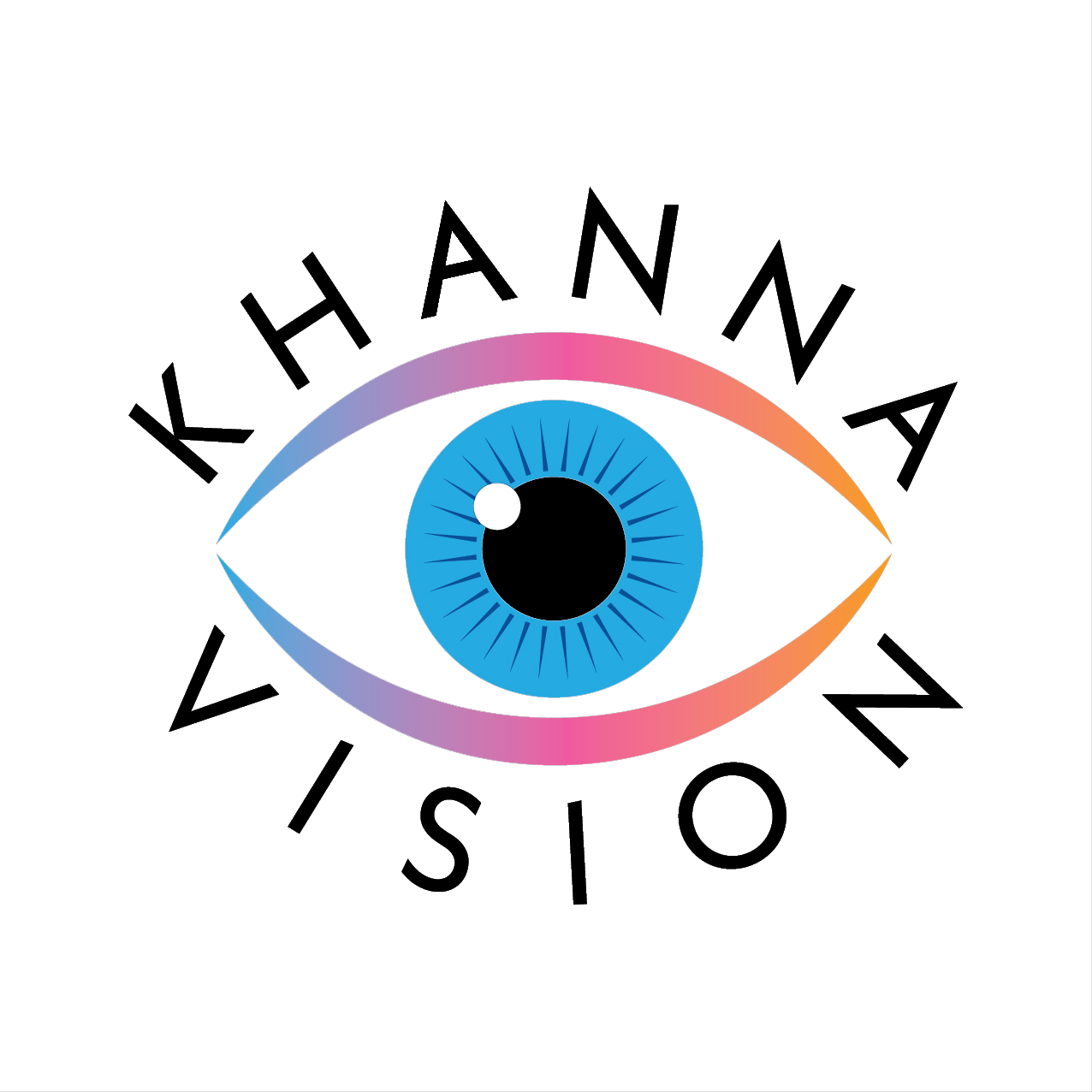For years, many adults believed that amblyopia, commonly known as lazy eye, could only be treated in childhood. Traditional medical thinking once suggested that after a certain age, the brain's visual system could no longer adapt. However, advances in eye care and neuroscience have changed that belief. Today, adults with amblyopia have new hope through modern treatment options that can significantly improve vision and depth perception. At Khanna Vision Institute, Dr. Rajesh Khanna combines cutting-edge technology and personalized care to help adults overcome the challenges of lazy eye and experience clearer, more balanced vision.

Understanding Amblyopia
Amblyopia is a condition in which one eye does not develop normal visual acuity, even when corrective lenses are used. It occurs because the brain favors one eye over the other, suppressing signals from the weaker eye. Over time, this imbalance leads to poor coordination and reduced clarity in the affected eye. The most common causes of amblyopia include:
- Unequal refractive errors (one eye being more nearsighted or farsighted than the other)
- Strabismus (eye misalignment)
- Visual deprivation caused by conditions like cataracts during childhood
While amblyopia usually starts in early childhood, it can persist into adulthood if not treated. The good news is that new therapies have shown the adult brain retains more visual plasticity than previously thought, meaning improvement is possible even later in life.
Symptoms and Daily Impact
Adults with amblyopia may experience:
- Blurry or reduced vision in one eye
- Poor depth perception
- Eye strain, especially during reading or computer work
- Difficulty judging distances
- Problems with hand-eye coordination
These symptoms can affect work performance, driving safety, and overall confidence. Many adults do not realize how much their vision imbalance limits them until they seek treatment.
Modern Treatments for Adult Amblyopia
Traditional eye patching therapy, where the stronger eye is covered to stimulate the weaker one, was primarily designed for children. While this approach can still help some adults, modern treatments are far more effective and comfortable.
Vision Therapy
Vision therapy involves customized exercises that train the eyes and brain to work together more efficiently. This includes focusing, tracking, and coordination exercises performed both in-office and at home. Over time, these activities strengthen the neural pathways responsible for vision in the weaker eye.
Digital Amblyopia Training
New digital platforms use virtual reality or computer-based games to stimulate both eyes simultaneously. These interactive exercises retrain the brain to use input from the weaker eye, promoting binocular (two-eyed) vision.
Corrective Lenses and Laser Vision Correction
In some adults, amblyopia is linked to unequal refractive errors between the eyes. Procedures like LASIK or SMILE can help balance vision, allowing both eyes to focus more equally. Correcting this imbalance helps the brain process input from both eyes instead of suppressing one.
Pharmacologic and Neurological Treatments
Recent studies show that certain medications and non-invasive brain stimulation techniques may enhance visual learning and speed up progress when combined with vision therapy. These advanced treatments are carefully supervised to ensure safety and effectiveness.

The Role of Technology and Expertise
At Khanna Vision Institute, Dr. Khanna uses advanced diagnostic tools to measure eye coordination, focus strength, and visual potential. Each treatment plan is designed to fit the patient's specific needs and visual goals. By combining clinical precision with modern training methods, patients can experience measurable improvements in clarity, balance, and depth perception.
Dr. Khanna's background in refractive and medical ophthalmology allows him to approach amblyopia treatment from both a neurological and optical perspective. This dual focus ensures comprehensive care that goes beyond simply correcting vision — it retrains the visual system to function naturally and efficiently.
Success in Adults
Many adults who undergo modern amblyopia treatment notice improvement in both vision and confidence. Depth perception becomes sharper, reading becomes more comfortable, and everyday tasks such as driving or sports feel easier. While each case is unique, progress is often visible within weeks to months of consistent therapy.
Unlike older methods, today's amblyopia treatments are designed to work with adult brain function rather than against it. By encouraging both eyes to communicate with the brain simultaneously, these techniques help restore more natural vision patterns.
When to Seek Treatment
If you have one eye that always seems weaker or if you have struggled with depth perception for years, a comprehensive eye exam is the first step. Early detection and personalized treatment planning can significantly increase the chances of improvement.
Even adults who have been told in the past that nothing can be done often find that new technology offers realistic solutions today. The team at Khanna Vision Institute evaluates each patient with a detailed exam and explains the best available options for visual rehabilitation.
Why Choose Khanna Vision Institute
Dr. Rajesh Khanna brings decades of experience in vision correction and ocular health to every patient. His approach focuses on identifying the root cause of visual imbalance and designing a plan that restores clarity and comfort. The institute combines advanced diagnostic technology, scientifically backed therapy methods, and compassionate care to ensure the best possible outcomes for adults with amblyopia.
Amblyopia is no longer a lifelong limitation. Thanks to modern technology and advanced vision therapy, adults can finally overcome the visual challenges once thought permanent. If you have been living with lazy eye and wish to improve your vision and quality of life, now is the time to explore new treatment options.
Schedule a comprehensive consultation with Dr. Rajesh Khanna at Khanna Vision Institute to learn how today's breakthrough amblyopia treatments can help you see more clearly and confidently at any age.
